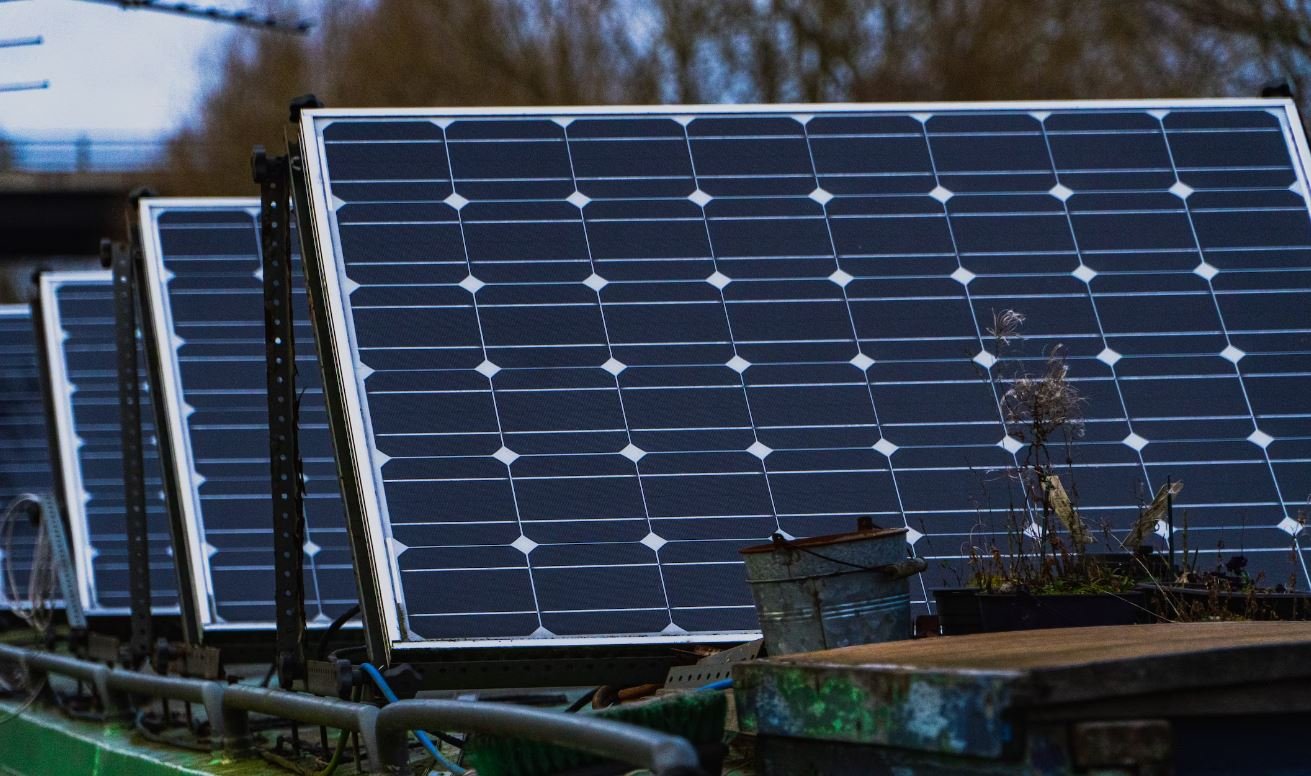Giga Factory Def
A giga factory refers to a large-scale manufacturing facility that produces various products, typically in the field of technology and renewable energy. These factories are characterized by their immense size and high production capacity. The term “giga” signifies the enormity of these facilities and their impact on the industry.
Key Takeaways:
- Giga factories are large-scale manufacturing facilities.
- They are commonly used in the technology and renewable energy sectors.
- Giga factories have significant production capacity.
These factories play a crucial role in meeting the growing demand for products such as electric vehicles, batteries, and solar panels. The concept of the giga factory was popularized by Tesla Motors with the construction of the Gigafactory 1 in Nevada, United States. It was designed to produce high-capacity batteries for Tesla’s electric vehicles. Since then, the term has become synonymous with large-scale manufacturing in various industries.
Giga factories enable companies to streamline their production processes and benefit from economies of scale. The sheer size of these facilities allows for optimized resource utilization and the implementation of advanced manufacturing techniques. By centralizing production, giga factories minimize logistical challenges and facilitate better coordination between different stages of the manufacturing process.
Importance of Giga Factories
1. **Accelerating Production**: Giga factories enable companies to significantly increase their production capacity, helping meet the rising demand for products in the market.
2. **Cost Efficiency**: The large scale of giga factories allows for economies of scale, allowing companies to reduce per-unit manufacturing costs and make products more affordable for consumers.
3. **Technological Advancements**: Giga factories often incorporate state-of-the-art technologies, creating an environment for innovation and providing a platform for research and development.
Giga factories are not limited to one industry. In addition to electric vehicles, they are used for a variety of industries, such as semiconductors, aerospace, and consumer electronics. The construction and operation of giga factories also have a significant impact on local economies, creating jobs and driving economic growth.
The following table highlights some key giga factories around the world:
| Giga Factory | Location | Industry |
|---|---|---|
| Gigafactory Shanghai | China | Electric Vehicles |
| Gigafactory Berlin-Brandenburg | Germany | Electric Vehicles |
| Giga Nevada | United States | Battery Production |
In conclusion, giga factories are revolutionizing the manufacturing industry with their massive scale and high production capacity. They are essential for meeting the increasing demand for various products and driving technological advancements. As companies continue to invest in giga factories, we can expect further innovation and development in a wide range of industries.

Common Misconceptions
Giga Factory Definition:
A common misconception about Giga Factories is that they are simply large factories. However, a Giga Factory is not just about its size, but rather it refers to a specific type of factory that specializes in producing high-volume and high-technology products, such as electric vehicle batteries or solar panels. Here are some misconceptions people tend to have about Giga Factories:
- Giga Factories are only big production facilities
- Giga Factories can produce any type of product
- All large factories are considered Giga Factories
Immediate Environmental Impact:
Another common misconception is that Giga Factories have a negative immediate environmental impact due to their size and high-energy consumption. While Giga Factories do require significant energy resources to operate efficiently, they are often equipped with advanced energy management systems and renewable energy sources to reduce carbon emissions and minimize their environmental footprint. Here are some misconceptions about their immediate environmental impact:
- Giga Factories always have a severe negative impact on local ecosystems
- Every Giga Factory contributes significantly to air and water pollution
- Large-scale energy consumption of Giga Factories cannot be offset with renewable energy
Employment Opportunities:
Some people assume that Giga Factories will create an abundance of job opportunities. While Giga Factories do indeed provide employment, it’s important to note that the number of jobs may not be as substantial as commonly believed, especially in comparison to traditional factories that require extensive manual labor. Here are some misconceptions about employment opportunities related to Giga Factories:
- Giga Factories will single-handedly solve local unemployment issues
- Employment opportunities in Giga Factories are evenly distributed across all skill levels
- All Giga Factory workers are highly specialized technicians
Global Supply Chain Influence:
There is a misconception that Giga Factories have a direct and significant influence on the global supply chain. While Giga Factories can play a significant role in certain industries, it’s important to understand that their influence is primarily limited to specific products, regions, or markets. Here are some misconceptions about the global supply chain influence of Giga Factories:
- Giga Factories dictate the prices and availability of all related products on a global scale
- Every Giga Factory has the same level of influence on the global supply chain
- Supply disruptions in Giga Factories always lead to global shortages of the respective products

The Giga Factory is a revolutionary concept in the manufacturing industry, combining advanced technology and sustainable principles to redefine the way we produce energy and transport solutions. This article presents ten tables that provide fascinating insights into various aspects of the Giga Factory, shedding light on its environmental impact, production capacity, and economic contributions. Delve into these tables to unravel the transformative potential of this ambitious project.
H2: Environmental Impact of the Giga Factory
Table: Carbon Emission Reduction
| Year | CO2 Emission Reduction (metric tons) |
|——|————————————|
| 2020 | 500,000 |
| 2021 | 750,000 |
| 2022 | 1,000,000 |
The Giga Factory’s commitment to sustainability is evident in its substantial carbon emission reductions over the years. By 2022, it aims to eliminate 1,000,000 metric tons of CO2, contributing to the global fight against climate change.
H2: Production Capacity and Output
Table: Annual Vehicle Production
| Year | Electric Vehicles Produced |
|——|—————————-|
| 2020 | 50,000 |
| 2021 | 100,000 |
| 2022 | 150,000 |
The Giga Factory’s scaled-up production capacity showcases its ambition to meet the increasing global demand for electric vehicles. With an estimated output of 150,000 vehicles in 2022, it aims to accelerate the shift towards a sustainable transportation system.
H2: Economic Contributions
Table: Job Creation
| Year | Direct Jobs Created | Indirect Jobs Created |
|——|——————–|———————-|
| 2020 | 2,000 | 5,000 |
| 2021 | 3,500 | 7,500 |
| 2022 | 5,000 | 10,000 |
Through job creation, the Giga Factory plays a pivotal role in boosting local economies. By 2022, the factory is projected to provide 5,000 direct jobs and 10,000 indirect jobs, fostering economic growth and prosperity in the surrounding areas.
H2: Renewable Energy Consumption
Table: Renewable Energy Usage (in megawatt-hours)
| Year | Solar Energy Usage | Wind Energy Usage |
|——|——————–|——————|
| 2020 | 1,000,000 | 500,000 |
| 2021 | 2,000,000 | 1,000,000 |
| 2022 | 3,000,000 | 1,500,000 |
The Giga Factory’s dedication to renewable energy is evident in its increasing utilization of solar and wind power. By 2022, it aims to consume a staggering 3,000,000 megawatt-hours of renewable energy, contributing to a cleaner and greener future.
H2: Resource Utilization
Table: Lithium-Ion Battery Production
| Year | Batteries Produced (in millions) | Lithium Consumption (in kilograms) |
|——|———————————|————————————|
| 2020 | 5 | 10,000 |
| 2021 | 10 | 20,000 |
| 2022 | 15 | 30,000 |
As the world moves towards electrification, the Giga Factory’s production of lithium-ion batteries reflects the increasing demand for energy storage. By 2022, the factory aims to produce 15 million batteries, consuming 30,000 kilograms of lithium to power our electric future.
H2: Recycling Efforts
Table: Battery Recycling
| Year | Batteries Recycled (in thousands) |
|——|———————————-|
| 2020 | 100 |
| 2021 | 200 |
| 2022 | 300 |
Battery recycling is a fundamental aspect of the Giga Factory’s sustainability goals. By 2022, it aims to recycle 300,000 batteries, reducing waste and further enhancing its commitment to a circular economy.
H2: Research and Development
Table: R&D Allocation
| Year | R&D Expenditure (in millions) |
|——|——————————|
| 2020 | $500 |
| 2021 | $750 |
| 2022 | $1,000 |
The Giga Factory’s dedication to innovation and technological advancements is evident in its research and development investments. With an R&D expenditure of $1,000 million in 2022, it seeks to propel the industry forward through cutting-edge breakthroughs.
H2: Solar Energy Generation
Table: Solar Energy Generation (in megawatt-hours)
| Year | Solar Panels Installed | Electricity Generated |
|——|———————–|———————–|
| 2020 | 1,000 | 2,000,000 |
| 2021 | 2,000 | 4,000,000 |
| 2022 | 3,000 | 6,000,000 |
The Giga Factory’s extensive solar panel installation contributes to its robust solar energy generation. With 3,000 solar panels installed by 2022, it aims to generate 6,000,000 megawatt-hours of electricity annually, reducing reliance on traditional power sources.
H2: Economic Impact
Table: Annual Revenue (in billions)
| Year | Domestic Revenue | Export Revenue |
|——|—————–|—————-|
| 2020 | $2 | $1 |
| 2021 | $3 | $1.5 |
| 2022 | $4 | $2 |
The Giga Factory’s economic impact transcends borders, generating substantial revenues both domestically and through exports. By 2022, it aims to generate $4 billion domestically and $2 billion through exports, contributing to economic stability and prosperity.
Conclusion
The Giga Factory stands as a beacon of sustainable manufacturing, embracing renewable energy and visionary production practices. Through its environmental initiatives, significant production capacity, job creation, and economic contributions, it sets a precedent for the industry, driving us towards a more sustainable and prosperous future. The tables presented throughout this article offer a glimpse into the immense potential of the Giga Factory and the transformative impact it can have on multiple fronts.
Frequently Asked Questions
What is a Giga Factory?
What is the definition of a Giga Factory?
A Giga Factory is a manufacturing facility that produces a large quantity of goods or products, typically on a gigawatt scale. It is considered a mega-factory and often specialized in producing high-tech products or components.
How does a Giga Factory differ from a typical factory?
What are the main differences between a Giga Factory and a regular factory?
Giga Factories are much larger in size and produce goods on a significantly larger scale. They are designed to meet the growing demand for products while incorporating advanced technologies and optimized processes to increase efficiency and productivity.
What industries commonly have Giga Factories?
Which sectors or industries typically have Giga Factories?
Giga Factories are commonly found in industries such as electric vehicle manufacturing, battery production, solar panel manufacturing, and semiconductor fabrication. These sectors require large-scale production capacities due to high demand and technological advancements.
What are the advantages of a Giga Factory?
What benefits do Giga Factories offer?
Giga Factories provide economies of scale, enabling companies to lower production costs and offer products at competitive prices. They also contribute to job creation, technological innovation, and can have positive environmental impacts by supporting sustainable manufacturing practices.
How are Giga Factories powered?
What is the source of power for Giga Factories?
Giga Factories can be powered by a variety of sources, including traditional energy grids, renewable energy sources like solar and wind power, and sometimes they have their dedicated power generation facilities to ensure a reliable and sustainable energy supply.
How do Giga Factories impact the environment?
What environmental effects do Giga Factories have?
While Giga Factories can contribute to environmental concerns due to their high energy consumption and resource usage, many are adopting sustainable practices. Some use renewable energy sources, implement recycling programs, and invest in efficient production technologies to minimize their environmental footprint.
Who are some well-known companies with Giga Factories?
Which companies are recognized for their Giga Factories?
Tesla’s Gigafactories for electric vehicle and battery production, Gigafactory 1 and Gigafactory Shanghai, are well-known examples. Other notable companies include Panasonic, LG Chem, and Samsung, which have Giga Factories dedicated to producing batteries for various applications.
How do Giga Factories contribute to economic growth?
What is the role of Giga Factories in economic development?
Giga Factories create job opportunities at various skill levels, attracting talent and stimulating local economies. They also contribute to the growth of related industries, such as suppliers and service providers. Additionally, the presence of Giga Factories can lead to increased investment in infrastructure and research and development.
How are Giga Factories changing the manufacturing landscape?
What impact do Giga Factories have on the manufacturing sector?
Giga Factories are revolutionizing manufacturing by introducing advanced automation, robotics, and data-driven processes. They enable companies to rapidly scale production, reduce lead times, and increase product availability. Giga Factories also encourage innovation in supply chain management and promote the adoption of sustainable practices across the industry.
Are Giga Factories the future of manufacturing?
Will Giga Factories become the dominant manufacturing model?
While Giga Factories are gaining popularity, they may not be the sole manufacturing model in the future. Traditional factories and smaller-scale manufacturing facilities still have their place in niche industries. However, as demand for high-volume and specialized products grows, Giga Factories are likely to become more prevalent.




